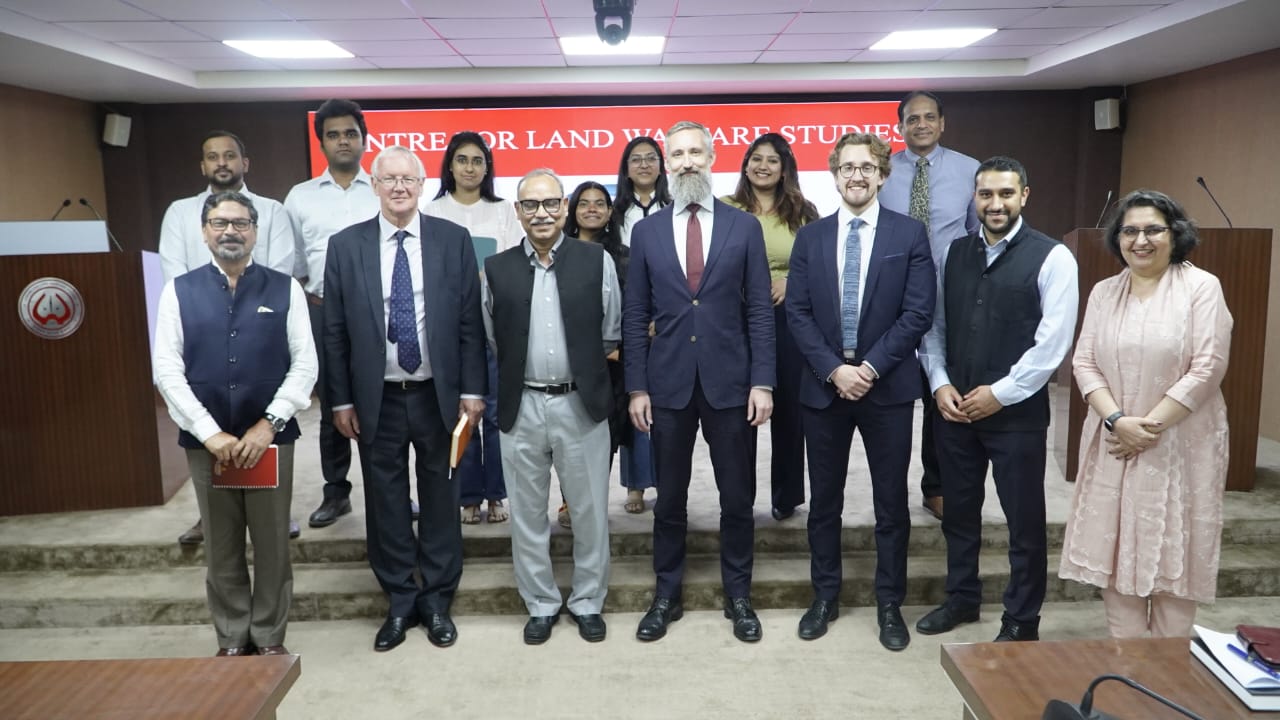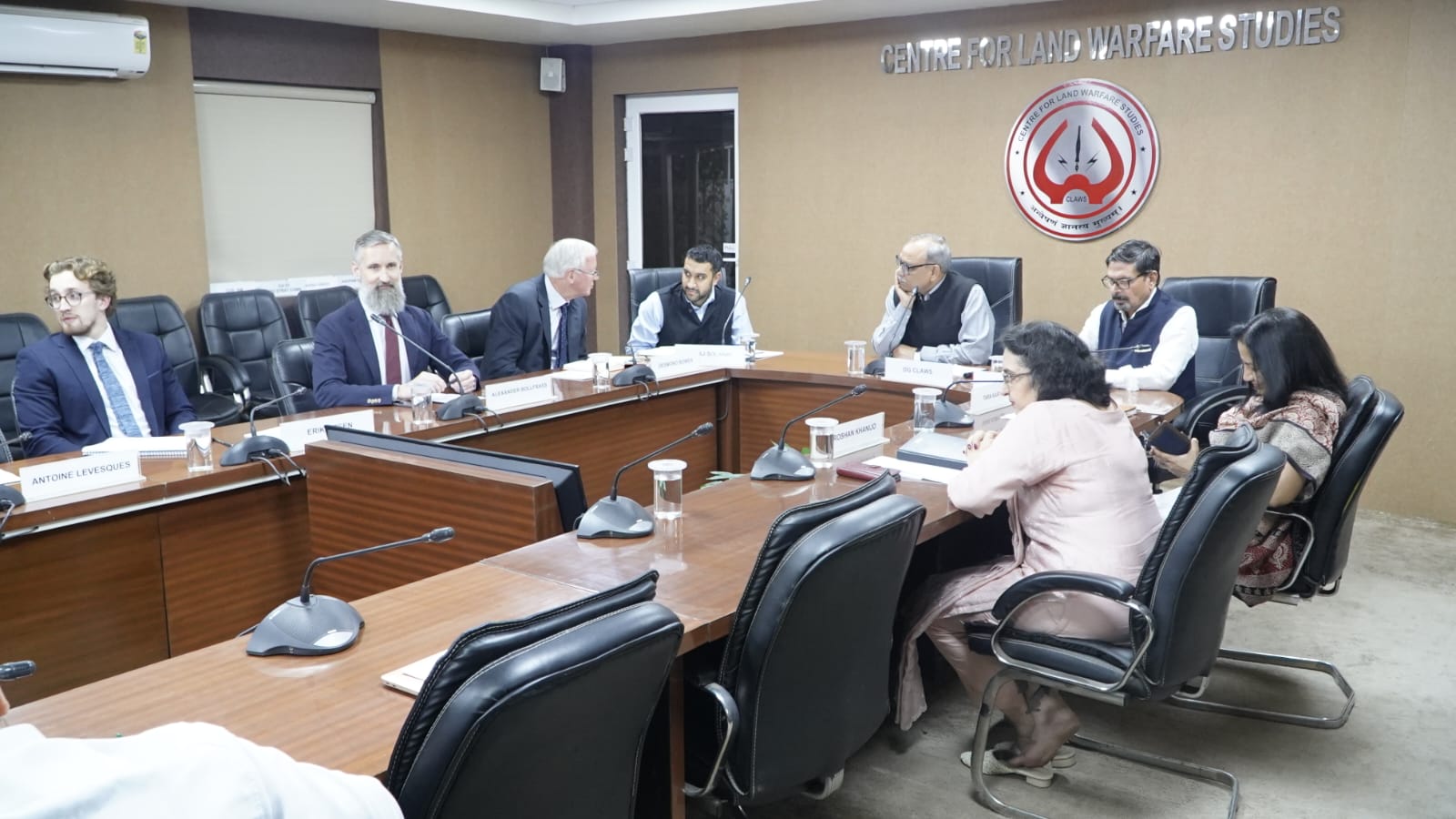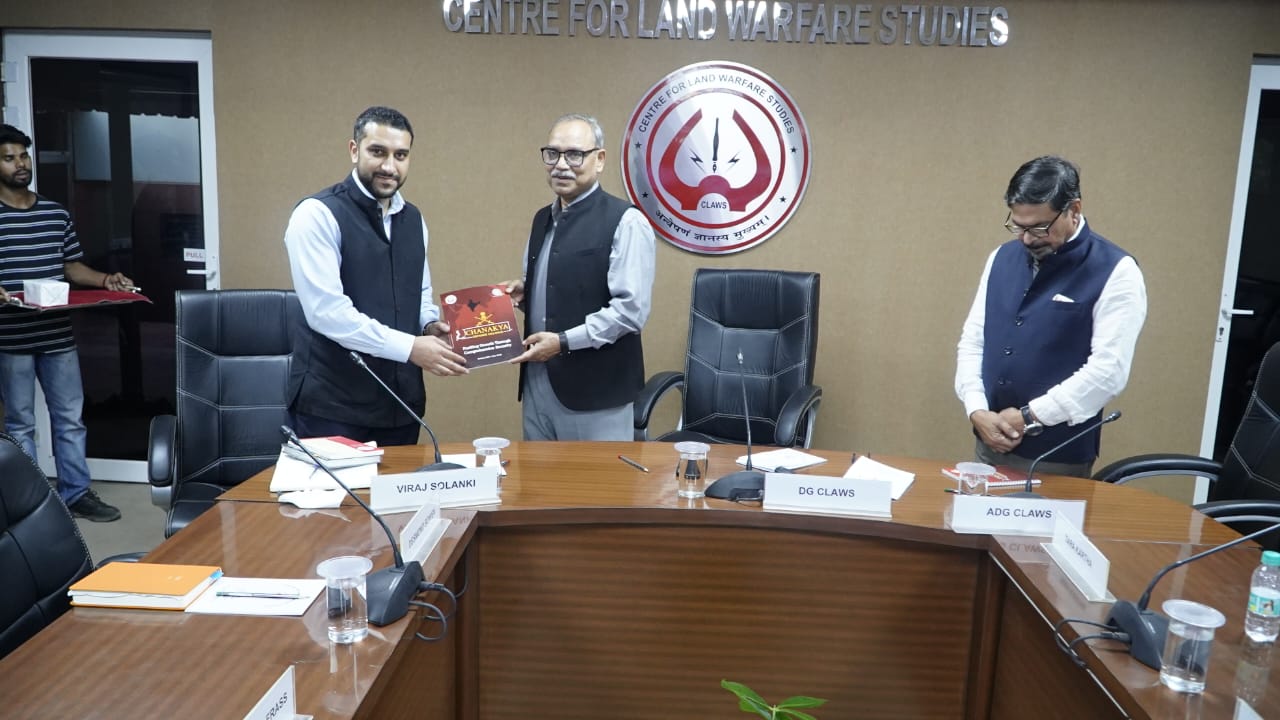EXECUTIVE SUMMARY
The visit of the six-member delegation from the International Institute for Strategic Studies (IISS), London, to the Centre for Land Warfare Studies (CLAWS) facilitated discussion on two major topics: India-China Relations Post Operation Sindoor, and China’s Military Modernisation Trends. This Round Table Discussion (RTD) offered a platform for the exchange of research and insights between both institutions on timely issues, contributing to a further understanding of the evolving security landscape in South Asia.
Topic I: India-China Relations Post Operation Sindoor
The first topic delved into the geopolitical Implications of Operation Sindoor & The Level of Collusivity between China and Pakistan. The operation marked a significant shift in India’s military posture and doctrinal framework, enhancing India’s strategic resolve and military capabilities. The consequences of India’s actions were felt not only in the region but also in China’s calculations, particularly in its support for Pakistan and its image as a neutral peace broker. There was an exploration of the deepening strategic alliance between China and Pakistan, which includes diplomatic shielding, military cooperation, and mutual interests in cyber, space, and nuclear domains. Discussions highlighted the growing complexity of the relationship, especially in terms of the Indus Waters Treaty (IWT) and its implications for regional security, particularly regarding water resources in the geopolitically sensitive areas between India and Pakistan.
Topic II: China’s Military Modernisation Trends
The second topic explored the trends in China’s Military Modernisation with a focus on the key components of its armed forces and the implications for regional security. State of Military Modernisation: “World-Class Military by 2049”: China’s military ambitions were highlighted through its advancements in hypersonic weapons, next-generation fighter jets, UAVs, surveillance satellites, and nuclear arsenals. The operational deployment of the DF-ZF hypersonic glide vehicle, the Chengdu J-36 fighter jet, and the Xi’an H-20 stealth bomber were noted as significant milestones in China’s push to develop a world-class military by the mid-21st century. The increasing sophistication of China’s PLA Aerospace Force and its expanding naval fleet, including the launch of new aircraft carriers and upgrades to its nuclear submarine force, raised concerns about future strategic balances in the region.
The RTD discussion focused on the Implications for India and Regional Security. The discussions emphasised the implications of China’s military advancements on India’s security environment, especially along the India-China border and in maritime spaces. The growing capabilities of China’s military posed new challenges, such as the enhanced threat along the borders, an expanding naval challenge in the Indo-Pacific, and the potential gap in deterrence capabilities between the two nations.
The discussions underscored the importance of strategic awareness and the need for enhanced defence preparedness in response to the rapidly changing security environment. The RTD also highlighted the need for continued dialogue and research collaboration between think tanks and defence institutions to address these emerging challenges effectively. The visit and discussions have furthered the mutual understanding of India-China relations and the broader regional security implications, paving the way for future engagements in defence policy and strategic partnerships.

















